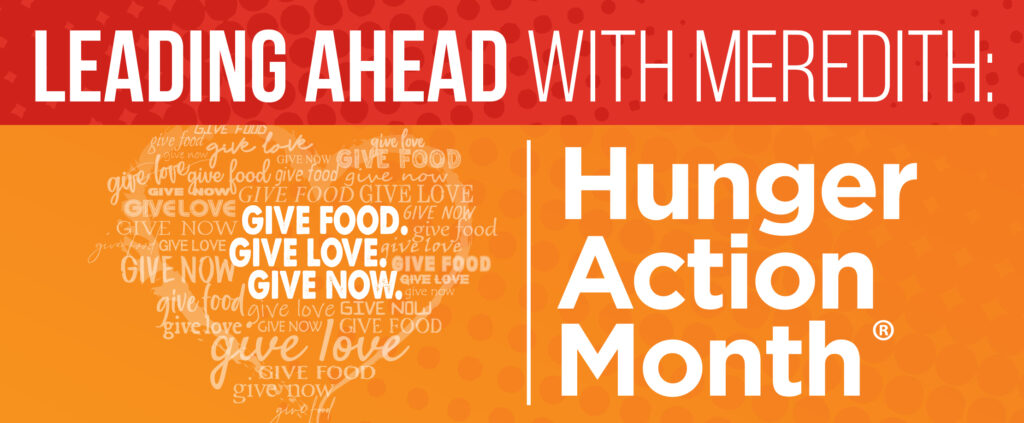A Growing Need
The number COVID-19 cases in the United States continues to rise and the ripple effect of millions of newly unemployed individuals is taking a toll on food insecurity rates across the U.S. More than 22 million Americans have filed jobless claims in the last four weeks. This growing need leads to massive, one-day mobile food distributions in cities like Los Angeles, Dallas, Chicago, and Philadelphia.
 Even before the coronavirus outbreak, however, food insecurity was a far-reaching problem. According to the U.S. Department of Agriculture‘s 2019 report, Household Food Insecurity in the United States, more than 37 million people in the United States struggle with hunger, including more than 11 million children and nearly 5.4 million seniors. With unemployment rates skyrocketing, those alarming numbers will only continue to grow. Today, food banks across the country are reporting a 40 percent increase in demand, according to Feeding America.
Even before the coronavirus outbreak, however, food insecurity was a far-reaching problem. According to the U.S. Department of Agriculture‘s 2019 report, Household Food Insecurity in the United States, more than 37 million people in the United States struggle with hunger, including more than 11 million children and nearly 5.4 million seniors. With unemployment rates skyrocketing, those alarming numbers will only continue to grow. Today, food banks across the country are reporting a 40 percent increase in demand, according to Feeding America.
Meeting the Needs of the Bi-State Region
Much like the other 200 food banks in the Feeding America network, the St. Louis Area Foodbank is feeling the pinch. The Foodbank feeds nearly 400,000 people in the bi-state region each year. Since mid-March, Foodbank staff have been working diligently to meet the uptick in demand across the bi-state region. Some generous donors hold virtual food drives or raise money, while food service partners step up with donations of perishable items like fresh produce, dairy products and meat. Items like canned goods and other non-perishable foods continue to be in high demand. The Foodbank distributes food from school districts, which will not re-open this year, and encourages closed restaurants to donate any unused perishables. Even in this challenging economic climate, the Foodbank manages to stay slightly ahead of the curve.

Even though the need for food rises exponentially in the 26 counties served by the St. Louis Area Foodbank, some food pantries have been forced to close their doors or cut back hours due to a decline in volunteers. In order to fill the gap, the Foodbank has partnered with its agencies and some new partners to launch 29 “disaster mobile markets” throughout its service area, including St. Louis City, St. Louis County and Jefferson County. And more will be added in the coming weeks and months.
While the pandemic has focused a spotlight on the millions of furloughed and newly unemployed people who are struggling to put food on their tables, we cannot ignore the millions of Americans who are at risk of food insecurity even during a robust economy. They include people experiencing homelessness, fixed incomes, or underemployment.
Compass Mobile Markets
Most of the agencies supplied by the Foodbank continue to meet the demands of their regular clients even during this public health crisis, albeit with some changes to keep staff, volunteers and clients safe and healthy. Business as usual means feeding hundreds of hungry families per month. One such agency is Compass Health Network, a nonprofit health care organization that provides behavioral health services as well as primary and dental health services. Its clinic in Warrenton, Missouri has been holding monthly mobile food distributions since 2014. The program started with 50 families and now feeds approximately 130 families per month, according to Shaun Sparks, Community Engagement Coordinator for the Compass Network. To meet an increased demand over the past few years, Compass has expanded its feeding program to monthly mobile market distributions in Wentzville and Union, Missouri, as well.
 Sparks said he has seen a small growth in the number of families needing food assistance since February. At its mobile distribution in Warrenton on April 15, approximately a dozen volunteers donned facemasks and gloves to prep nearly 7,000 pounds of food dropped off by the Foodbank earlier in the morning. Staples such as rice and beans were bagged and boxed along with fresh apples, potatoes, oranges, and two types of meat. Volunteers loaded food into the more than 100 vehicles which would pass through the line in the next two hours.
Sparks said he has seen a small growth in the number of families needing food assistance since February. At its mobile distribution in Warrenton on April 15, approximately a dozen volunteers donned facemasks and gloves to prep nearly 7,000 pounds of food dropped off by the Foodbank earlier in the morning. Staples such as rice and beans were bagged and boxed along with fresh apples, potatoes, oranges, and two types of meat. Volunteers loaded food into the more than 100 vehicles which would pass through the line in the next two hours.
“I tell my volunteers it’s like running a restaurant shift. I know it will be busy if I have a line of cars waiting 20-30 minutes before we start,” Sparks said, adding, “Today I think we will be busy. It’s a beautiful day and they need the food right now. You have families who are afraid to leave their homes and you have families who may not have received any assistance yet. And local food pantries are hurting right now, which is where some of our families go to supplement their food throughout the month.”
Faces of Hunger | Warrenton, MO
One of those waiting patiently in line for the very first time is a 79-year old grandmother who recently was laid off from her part-time job. Without assistance, she would be forced to choose between paying bills or buying food. “Even the stimulus check won’t be enough,” she added. “By the time I pay my rent and phone bill, there is nothing left. Social Security isn’t enough. I have to work.” Since losing her job, this senior has lost four pounds. She oftentimes has to stretch one meal into three.
One car down is an immune-compromised mom with a disabled daughter at home. With the arrival of COVID-19, a trip to the grocery store is fraught with anxiety for this family. Even before the virus they depended on the Compass distribution to keep food on their table. “Going out is really scary for us,” she said. “We are just trying to get by as best as we can. This helps us out a lot. Luckily, there are only two of us. If there were more in my family, I would be really worried.” As grateful as she is for the food assistance, she knows that she and daughter will be eating only canned goods by the end of the month because their fresh food will be gone.
Then there is a retiree who is fostering four boys, ranging in age from nine to 16-years old. “They eat a lot,” she laughed, especially now that they are not in school. She tries not to go to the grocery store frequently because she doesn’t want to get sick, which would cause the boys to be moved to another foster home. The food assistance she receives from Compass does help stretch meals each month. They also eat a lot of peanut butter and jelly sandwiches to make do, she added.
Distributing Food and Hope

You don’t have to be a member of the Compass Health Network to participate in the mobile distributions. Those who sign up can pick up food for other families as well. Sparks said he does not have too many restrictions in terms of who can sign up for the program. “If people know of the service and sign up, they probably need the service,” he said, adding, Compass is looking to expand its mobile market distributions across its entire network in the near future.
To learn more about the St. Louis Area Foodbank’s COVID-19 Relief Plan, and how you can help, please visit https://stlfoodbank.org/covid19/

